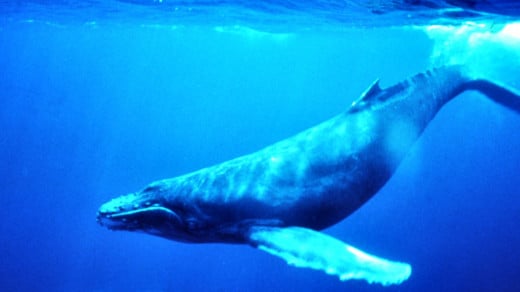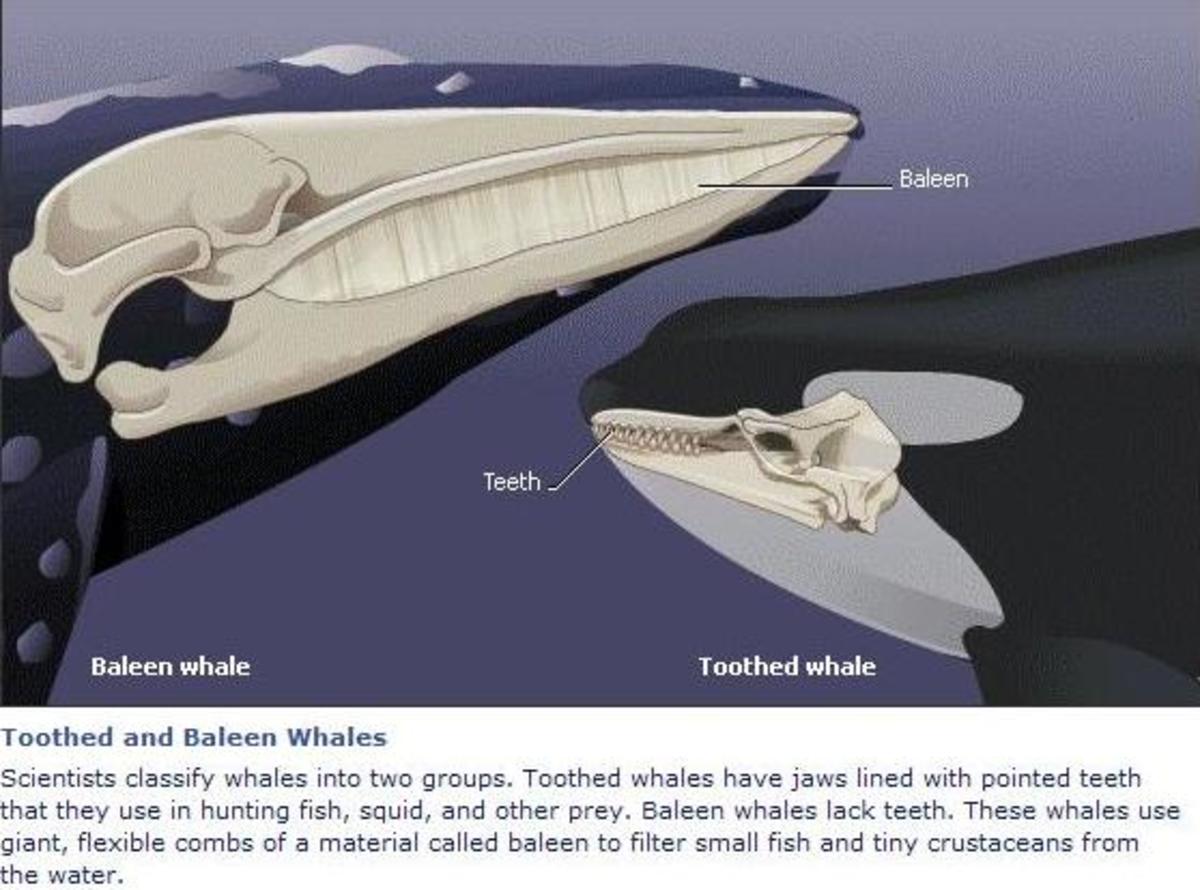- HubPages»
- Education and Science»
- Life Sciences»
- Marine Biology»
- Marine Life
how do whales and dolphins communicate

The sea was once thought to be a silent world, whose inhabitants were believed to make little or no noise. We are now able to scan the seas with high-tech apparatus, and have dis covered it to be a world of sound where fish, mammals and invertebrates communicate using a variety of thrums, snaps and clicks. Whales and dolphins are the most adept of all the marine in habitants at using sound.
They live in a three-dimensional world where visibility is very poor and produce sounds to orientate themselves and communi cate within their environment. We, on the other hand, live in a world of light and colour and perceive our world through sight. In this way at least, humans and cetaceans differ greatly. Whales and dolphins produce a wide range of sounds, some of which are social calls and others which are navigational.
Sound travels four and a half times faster underwater than it does in air, making it a very effective form of communication. Killer whales (Orcinus orca) are extremely vocal and use a wide range of social calls to help strengthen the bond between pod members. Each pod has its own readily identifiable calls which are produced by all members of that pod. Some pods are easily distinguished while othes produce calls that are more similar.
The latter groups may have been related at one time and so carry part of the original call. Some of the social calls serve to keep the pod mem bers in constant contact, particularly when feeding, as they may become scattered over a wide area during the excitement of the hunt. One of the most fascinating uses of sound by cetaceans is their ability to echolocate.
By producing high frequency sounds and listening for their returning echoes, they are able to build up a 'sound picture' of their immediate environment, helping them to navigate and detect their prey. Not all cetaceans are thought to possess this ability, but much study has been done regarding the echolocation abilities of the bottle nosed dolphin (Tursiops truncatus).
Studies on this species have shown them to have a very effective sonar system,more efficient than the apparatus used in submarines, and very sensitive hear ing. Bottlenosed dolphins are not just able to determine shape, size and distance using sound, but can also visualize internal structure. This may be used to recognize fish prey, as each individual fish will reflect a different echo, depend ing on the size of the swim bladder.
These echoes may then be matched with echoes that are stored in the dolphin's memory. Dolphins often use their echolocation systems to investigate objects at close proximity. This may in part be due to the visual blind spot dir ectly in front of them. Cetaceans have no vocal cords - in stead, the sounds are produced in the larynx and blowhole region with the aid of muscular action.
The high pitched sounds used for echolocation may be focused by the pad of fatty tissue known as the melon, situated in the forehead, which is thought to act as an acoustical lens (the melon distinguishes toothed from baleen whales as only the former have it). The sound travels through the water and bounces back from anything within range, returning to the cetacean as an echo. Until re cently, it was thought that sounds picked up by the bottlenosed dolphin's lower jaw were transmitted to the inner ear via a fat-filled cavity.
Recent research, however, suggests that the high frequency sounds used in echolocation are in fact detected and received via the dolphin's teeth, which travel to the brain via nerves. As well as using echolocation to detect prey, killer whales also spy-hop - that is, thrusting their upper bodies out of the water to look for signs of distant fish schools. When hunting other mammals such as seals, the killer whales are silent, as their calls would soon alert the seals to their presence.
Although cetaceans use sound to a high degree, most cetaceans have fairly good eyesight, both above and below the water. The beluga whale uses both sight and sound to locate its prey, which often includes crustaceans and marine worms as well as schooling fish. The beluga whale is sometimes known as the sea canary due to its very audible repertoire of whistles, moos and chirps. Cetaceans usually vocalize underwater and it is only in marine zoos that they can be heard 'singing' in the air.
The sperm whale (Physeter macro cephalus) is thought to be able to see for a distance of 30 m (100 ft), which is only two or three times its own body length. Sperm whales produce a wide variety of vocalizations and some scientists believe them to have echo location capabilities. Sperm whales, which dive to great depths for their prey, are thought to be able to stun their prey using pure sound.
To river dolphins, which live in muddy rivers and estuaries, echolocation is essential for orientation and location of prey, which consists mainly of fish and freshwater crustaceans. River dolphins are a rather primitive group of cetaceans that have retained some of the features present in the dolphins' early ancestors. The river dolphin's eyes are very small and were once thought to be non-functional. Studies on the Indus River dolphin (Platanista minor), however, suggest that they do have some vision above water.
The most musical of all the cetaceans is the humpback whale (Megaptera novaeangliae), the only animal which can boast to having had a top-selling single in the charts, when, in 1970, their eerie and haunting but beautiful sounds were heard by many people for the first time. Scientific studies on humpback whale sounds have revealed them to be true songs, containing an ordered sequence of units similar to those of song birds.
Although the exact function of the song is unclear, it is thought to have some sexual meaning. Humpback whales do not sing all the year round and singing is confined al most entirely to the winter breeding grounds. The singing whales are thought to be solitary males, possibly announcing their sexual condition. The males start to sing as soon as they reach the breeding grounds. The song itself may last up to 35 minutes, with a definite beginning and a definite end.

If a whale is interrupted mid-song, it will recom mence exactly where it left off. Small groups of males may build up around a female who mayor may not have a calf. Only one male escorts the female at one time, but this position may change throughout the day. When a male joins the group, it stops singing and only recommences when it leaves the group.
All the whales within one region sing the same song; however, individual whales seem to possess a personal char acteristic to their voice, so keeping their own identity. This characteristic may allow females to recognize specific males. The content of the song will slowly change over several seasons. Cetaceans are also thought to com municate in other ways. Jaw clapping is used as a warning by older toothed whales and has been recorded in the bottle nosed dolphin. Another behaviour noted in many cetaceans., including killer whales, sperm whales and right whales (Eubalaena glacialis), is 'lobtailing'.
The whale hangs head down in the water with its tail flukes in the air. The whale swings its tail to and fro several times before bringing it down on the water with a mighty slap which can be heard for miles around. Lobtailing may be a threatening behaviour or a social communication.










